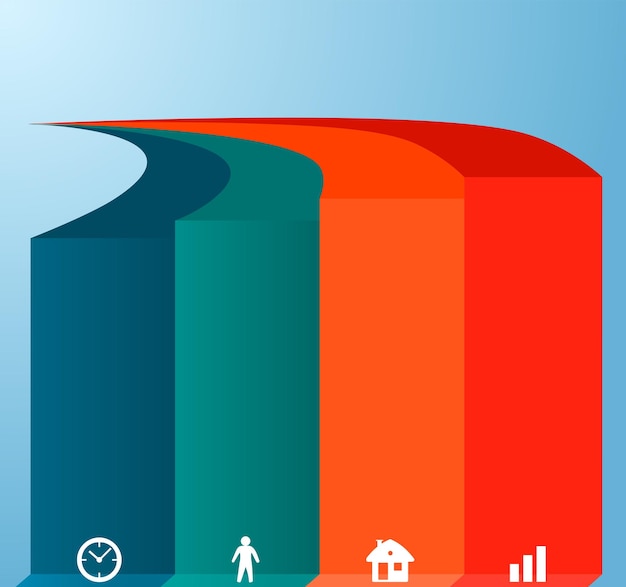SSI & SSDI Benefits 2025: COLA Increase Explained

SSI and SSDI benefits in 2025 will see adjustments based on the Cost-of-Living Adjustment (COLA), impacting millions of Americans who rely on these government assistance programs to meet their basic needs; understanding these changes is crucial for financial planning.
Navigating the complexities of government assistance programs can be daunting, especially when it comes to understanding how benefits adjust over time. Let’s explore the **SSI and SSDI Benefits in 2025: Understanding the Cost-of-Living Adjustment (COLA) Increase** and how it affects recipients.
Understanding SSI and SSDI: Core Differences
Supplemental Security Income (SSI) and Social Security Disability Insurance (SSDI) are both federal programs administered by the Social Security Administration (SSA), but they serve different populations and have distinct eligibility requirements. Let’s clarify those differences.
What is Supplemental Security Income (SSI)?
SSI is a needs-based program that provides financial assistance to aged, blind, and disabled individuals who have limited income and resources. It’s designed to help cover basic living expenses.
SSI is funded by general tax revenues, not Social Security taxes. Eligibility is primarily based on financial need, regardless of prior work history.
What is Social Security Disability Insurance (SSDI)?
SSDI, on the other hand, is a program for workers who have paid Social Security taxes and become disabled. Benefits are based on the individual’s earnings record.
SSDI is funded by Social Security taxes paid by workers and employers. Eligibility is based on a qualifying work history and a medically determinable disability.
Here’s a comparison of SSI and SSDI:
- SSI: Needs-based; funded by general tax revenues; no work history required.
- SSDI: Based on work history; funded by Social Security taxes; requires a qualifying work history and disability.
- Similarities: Both are administered by the SSA and provide monthly financial assistance.

Understanding the differences between SSI and SSDI is the first step in grasping how COLA increases can impact recipients differently. Each program provides a vital safety net, but their eligibility criteria and funding sources vary significantly.
What is the Cost-of-Living Adjustment (COLA)?
The Cost-of-Living Adjustment (COLA) is an annual adjustment to Social Security and Supplemental Security Income (SSI) benefits designed to counteract the effects of inflation. Let’s understand how COLA works.
The COLA is based on the Consumer Price Index for Urban Wage Earners and Clerical Workers (CPI-W), a measure of inflation calculated by the Bureau of Labor Statistics (BLS).
The SSA announces the COLA each October, and it goes into effect in January of the following year. This adjustment ensures that the purchasing power of benefits is maintained over time.
How is COLA Calculated?
The COLA is calculated by comparing the average CPI-W for the third quarter (July, August, and September) of the current year to the average CPI-W for the third quarter of the previous year.
The percentage increase between these two averages determines the COLA for the following year.
For example, if the average CPI-W for the third quarter of the current year is 3% higher than the average for the third quarter of the previous year, the COLA will be 3%.
Keep the following in mind:
- COLA is designed to protect the purchasing power of benefits.
- It is based on the CPI-W, a measure of inflation.
- The SSA announces the COLA each October.

Projecting the 2025 COLA Increase: Factors at Play
Predicting the exact COLA increase for 2025 is challenging, as it depends on inflation rates throughout 2024. However, economists and financial analysts provide estimates based on current trends. Here’s an overview of the factors.
Inflation rates, economic growth, and government policies all influence the COLA. Understanding these factors can help in making realistic projections.
The Federal Reserve’s monetary policy decisions also play a crucial role in managing inflation and, consequently, the COLA.
Economic Forecasts and Expert Predictions
Various economic forecasts and expert predictions attempt to anticipate the COLA increase for 2025. These estimates vary based on different assumptions and models.
Monitoring these predictions can give beneficiaries a general idea of what to expect, but it’s important to remember that they are not guarantees.
Pay attention to reports from:
- The Congressional Budget Office (CBO)
- The Social Security Administration (SSA)
- Independent economic analysis firms
While projections can offer insights, the actual COLA will depend on the CPI-W data collected in the third quarter of 2024. It’s essential to stay informed and adjust financial planning accordingly.
How the COLA Increase Impacts SSI Recipients
For SSI recipients, the COLA increase directly affects their monthly benefit amount. However, it’s essential to consider how other income sources may interact with these adjustments.
SSI benefits are subject to income limits, so any increase in other income sources, including the COLA, could potentially reduce the SSI benefit. Let’s consider the following.
The SSA uses a formula to calculate the SSI benefit based on the individual’s countable income. Understanding this formula can help SSI recipients anticipate how the COLA will impact their monthly payments.
Impact on Other Benefits and Resources
The COLA increase can also affect eligibility for other government assistance programs, such as Medicaid and SNAP (Supplemental Nutrition Assistance Program).
Some programs have income thresholds that, if exceeded due to the COLA, could lead to a reduction or loss of benefits.
SSI recipients need to be aware of these potential interactions and plan accordingly. Always keep in mind these points:
- COLA increases can affect SSI benefit amounts.
- Other income sources may reduce SSI benefits.
- Eligibility for other programs could be impacted.
A careful review of income and eligibility requirements for all assistance programs is essential to ensure continued access to needed resources.
How the COLA Increase Impacts SSDI Recipients
For SSDI recipients, the COLA increase primarily affects their monthly benefit amount and the annual earnings limit for those who are working while receiving benefits. Let’s explore these implications.
The COLA increase directly boosts the monthly SSDI benefit, providing additional income to help offset rising living expenses.
The annual earnings limit, also known as the Substantial Gainful Activity (SGA) limit, is adjusted each year to reflect changes in average wages.
Changes to the SGA Limit
The SGA limit determines whether an SSDI recipient’s work activity is considered substantial. Exceeding this limit can result in the suspension of benefits.
The COLA increase can indirectly affect the SGA limit, as it is tied to national average wage levels.
It’s important for SSDI recipients who are working to monitor their earnings and ensure they remain below the SGA limit to maintain their eligibility. Here are several considerations:
- COLA increases directly impact SSDI benefit amounts.
- The SGA limit may also be adjusted.
- Working SSDI recipients need to monitor their earnings.
Staying informed about these changes is vital for SSDI recipients who are balancing work and disability benefits.
Strategies for Maximizing Benefits in 2025
Given the projected COLA increase for 2025, there are several strategies that SSI and SSDI recipients can use to maximize their benefits and financial stability. Here are a few strategic ideas for navigating these changes.
Budgeting and financial planning, exploring additional resources, and seeking professional advice can all help beneficiaries make the most of their available income.
Consider the following as you plan:
Budgeting and Financial Planning Tips
Creating a detailed budget that accounts for all income sources and expenses is crucial for managing finances effectively.
Identifying areas where expenses can be reduced or optimized can free up additional funds.
Prioritizing essential needs and setting realistic financial goals can help beneficiaries stay on track. To start:
- Track all income and expenses.
- Identify areas for potential savings.
- Set realistic financial goals.
Exploring Additional Resources and Support
Many local, state, and federal programs offer additional assistance to low-income individuals and families.
These programs can provide support for housing, food, healthcare, and other essential needs.
Connecting with community organizations and advocacy groups can help beneficiaries access these resources. Explore resources like:
- Housing assistance programs
- Food banks and pantries
- Healthcare assistance programs
By taking proactive steps to manage their finances and access available resources, SSI and SSDI recipients can enhance their financial well-being and navigate the challenges of rising living costs.
| Key Point | Brief Description |
|---|---|
| 💰 COLA Impact | Annual adjustment to SSI/SSDI to offset inflation. |
| 🏢 SSI vs. SSDI | SSI is needs-based; SSDI is based on work history. |
| 📈 2025 Projections | COLA depends on 2024 inflation; consult expert forecasts. |
| 💼 Maximizing Benefits | Budget, explore resources, and seek professional advice. |
Frequently Asked Questions
▼
The main purpose of the Cost-of-Living Adjustment (COLA) is to ensure that the purchasing power of Social Security and SSI benefits is maintained over time, by adjusting for the effects of inflation.
▼
The COLA is calculated based on the Consumer Price Index for Urban Wage Earners and Clerical Workers (CPI-W), comparing the third-quarter averages of the current and previous years.
▼
The COLA increase can raise your SSI benefit amount, but this increase may be reduced if you have other sources of income that are factored into your SSI calculation.
▼
The Substantial Gainful Activity (SGA) limit is the maximum amount of earnings that an SSDI recipient can have from work without risking the suspension of their benefits.
▼
You can find information about additional assistance programs through local community organizations, state social service agencies, and federal government websites like benefits.gov.
Conclusion
Understanding the nuances of SSI and SSDI benefits, particularly the COLA increase, is vital for beneficiaries to effectively plan their finances and maintain their financial stability. Keeping abreast of these adjustments and seeking professional guidance can empower recipients to navigate these programs successfully.
